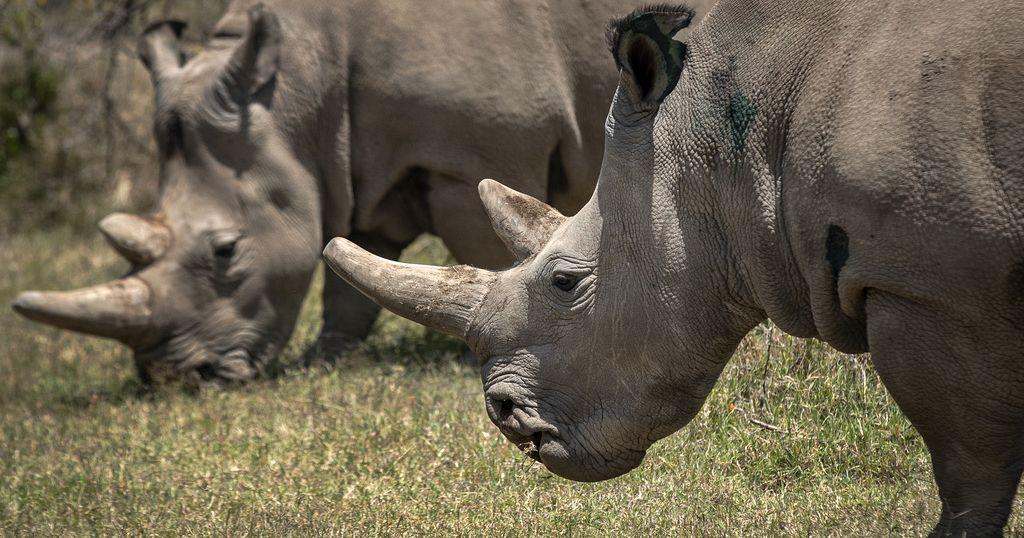Africa-Press – Kenya. Here protected at Kenya’s Ol Pejeta Conservancy are Najin and Fatu.
They are the last two northern white rhino left on Earth.
They’re both female but not young or healthy enough to carry a full pregnancy.
There is no northern white male, the last one died in 2018.
Now the international group of scientists called BioRescue say they’ve shown IVF techniques could save them from extinction.
They have reported that a southern white rhino became pregnant with a southern white rhino embryo.
However the mother rhino and her embryo died after 70 days due to a bacterial infection.
Despite this the team say the pregnancy, which is the world’s first rhino IVF pregnancy, is great news for the species.
Professor Thomas Hildebrandt is BioRescue lead researchers and the head of the Department of Reproduction.
He says: “
The scientists carried out the procedure implanting a southern white embryo into a southern white surrogate mother on 24 September in 2023.
Members of the conservation team called BioRescue say the IVF resulted in the 70 day pregnancy of a well developed male embryo which was 6.4 centimetres long.
However, the team were not aware of the pregnancy until the end of November in 2023.
It only came to light because of the examination of the female rhino after she died from a bacterial infection caused after spores from the clostridium strain were released from the soil from floodwater.
The safety of the remaining surrogates and the last two remaining northern white rhinos Najin and Fatu was secured by quarantines and a vaccination programme.
The scientists say the death of the surrogate and her embryo was not related to the pregnancy.
They believe the success of the embryo’s implantation and length of the pregnancy shows they’re mission to save the northern white rhino from extinction is on course.
The next step for the scientists is to choose and prepare what they describe as a ‘teaser bull’ which will reveal when the potential surrogate mothers can be implanted with embryos.
The scientists need to ensure they select the animal which has been demonstrated to be reproductively sound.
Hildebrandt explains:
This process can take several months, but only after the successful conclusion of this stage of the programme will the scientists attempt an embryo transfer with a northern white rhino.
It’s at this stage that the BioRescue consortium hope they will have paved the way for the first northern white rhino calf to be born by artificial reproduction.
Although carried to term by the southern whites the calves born will be purely northern white rhinos.
However the behaviours of the two species is different because they are from different parts of the African continent.
Hildebrandt says the remaining northern white rhinos will be crucial in socialising the young.
It’s been a long and difficult mission, and there is a long way to go but the scientists are taking their success as succour for the long journey ahead.
And the science doesn’t end with the IVF as Hildebrandt points out.
says Hildebrandt.
Hildebrandt says the reproductive science they’ve learned can be used to help other species, but he cautions this should not be considered a solution for destroying current animal habitats.
he says.
For More News And Analysis About Kenya Follow Africa-Press






